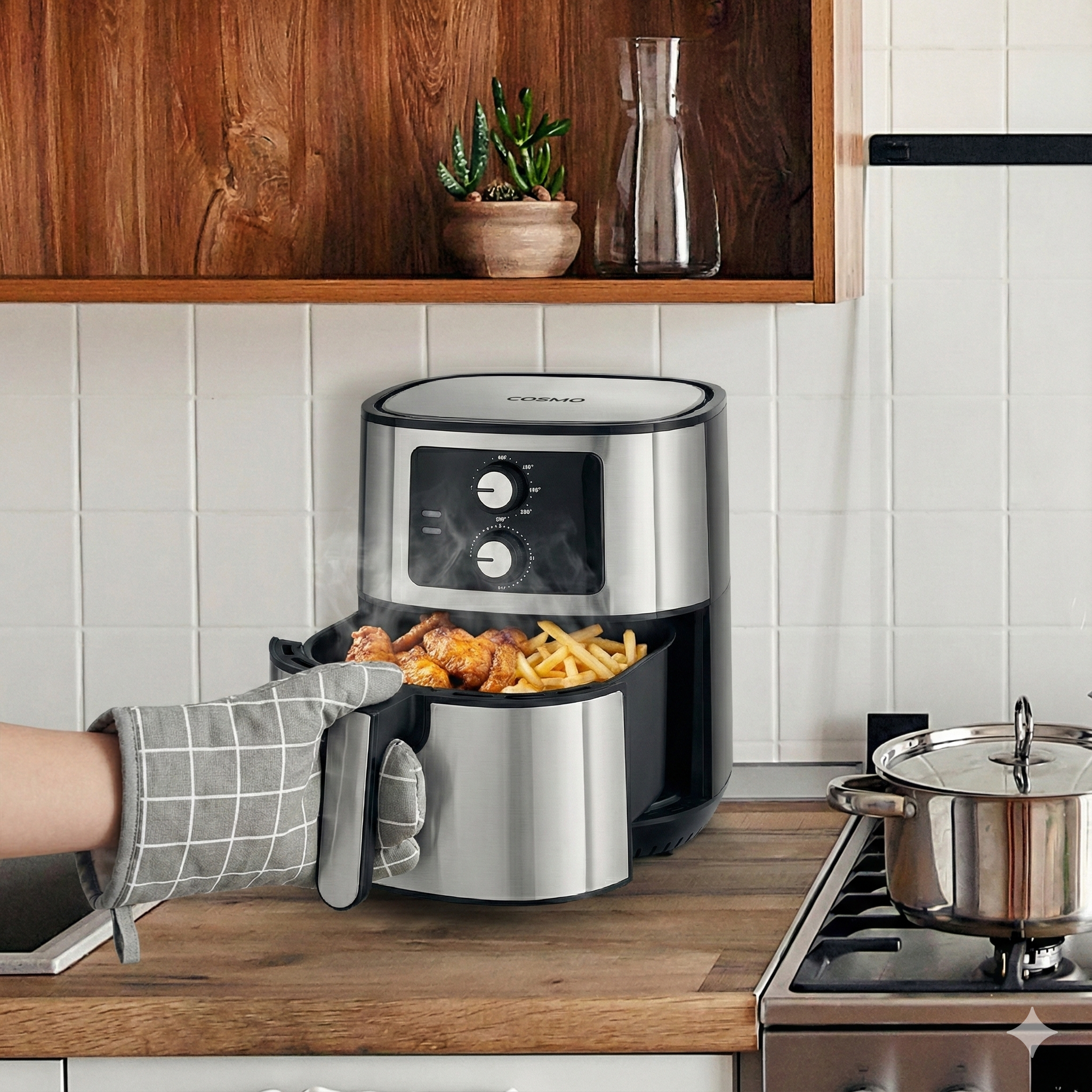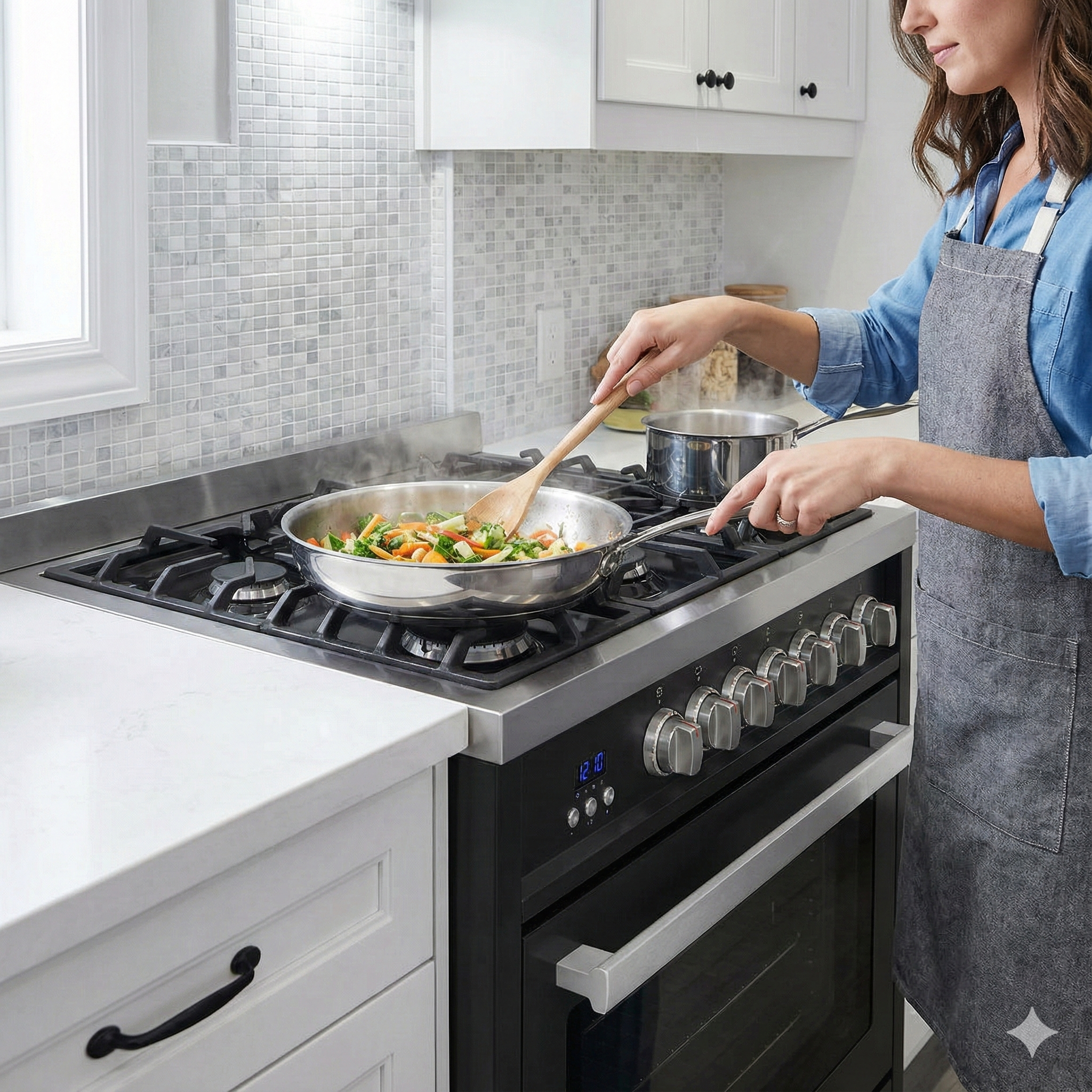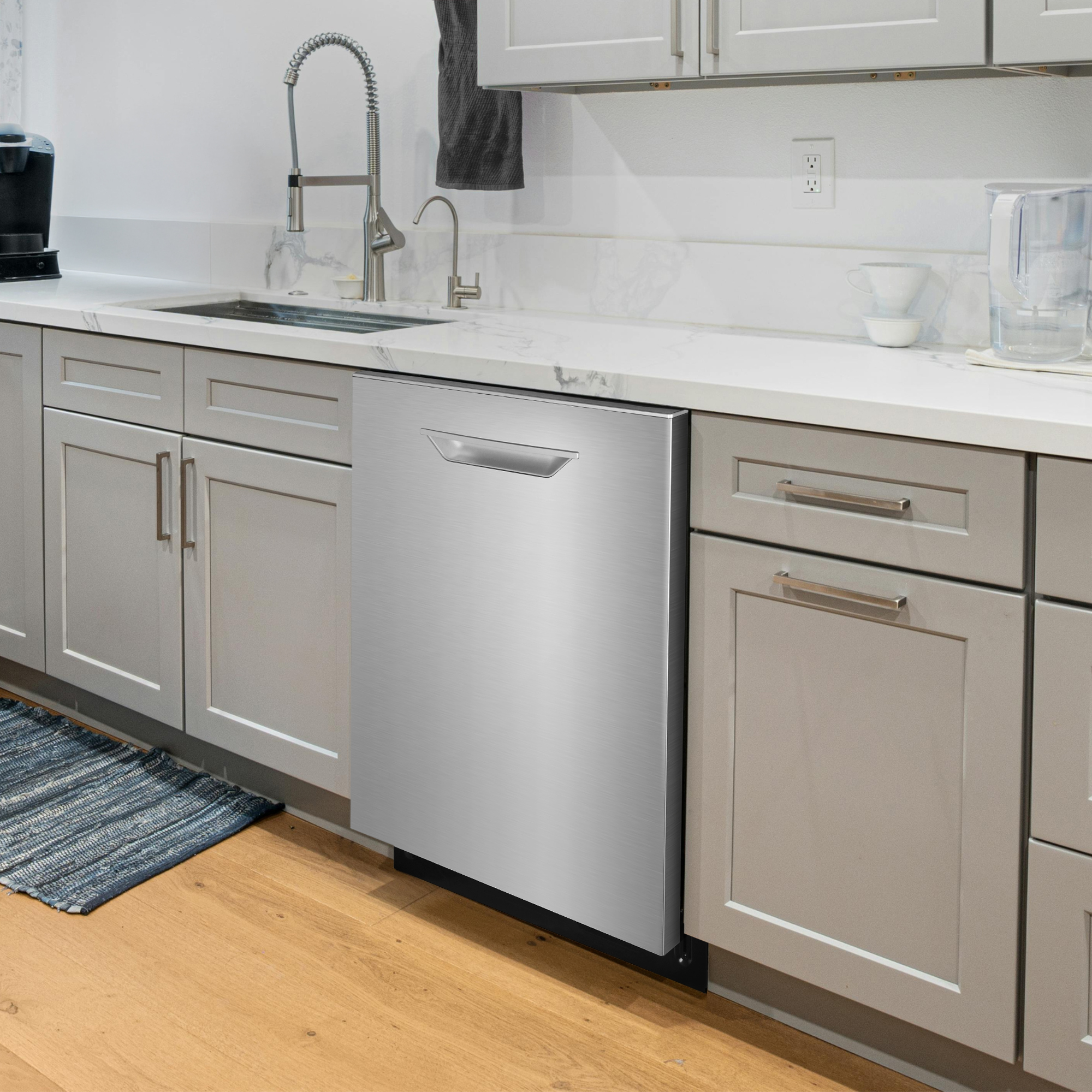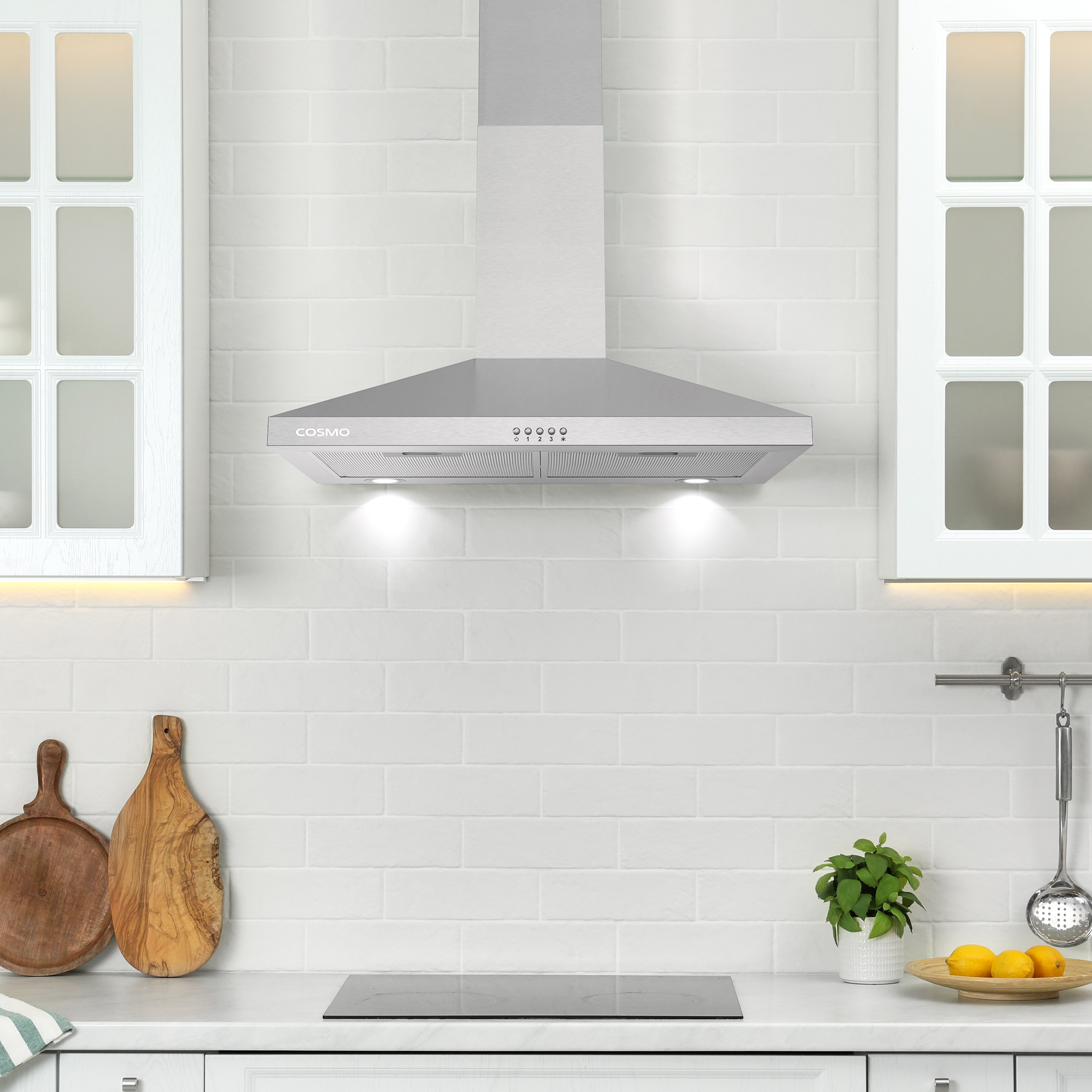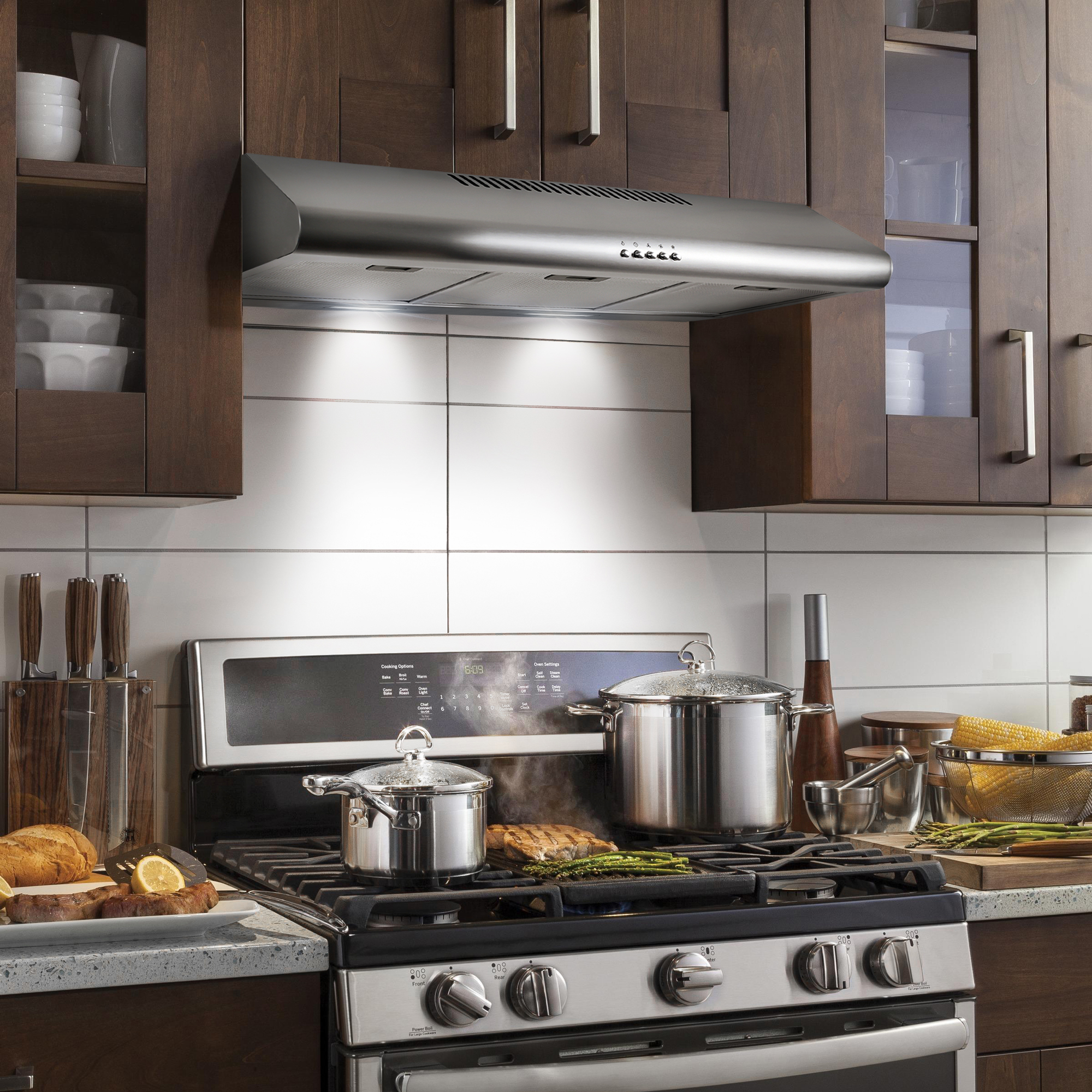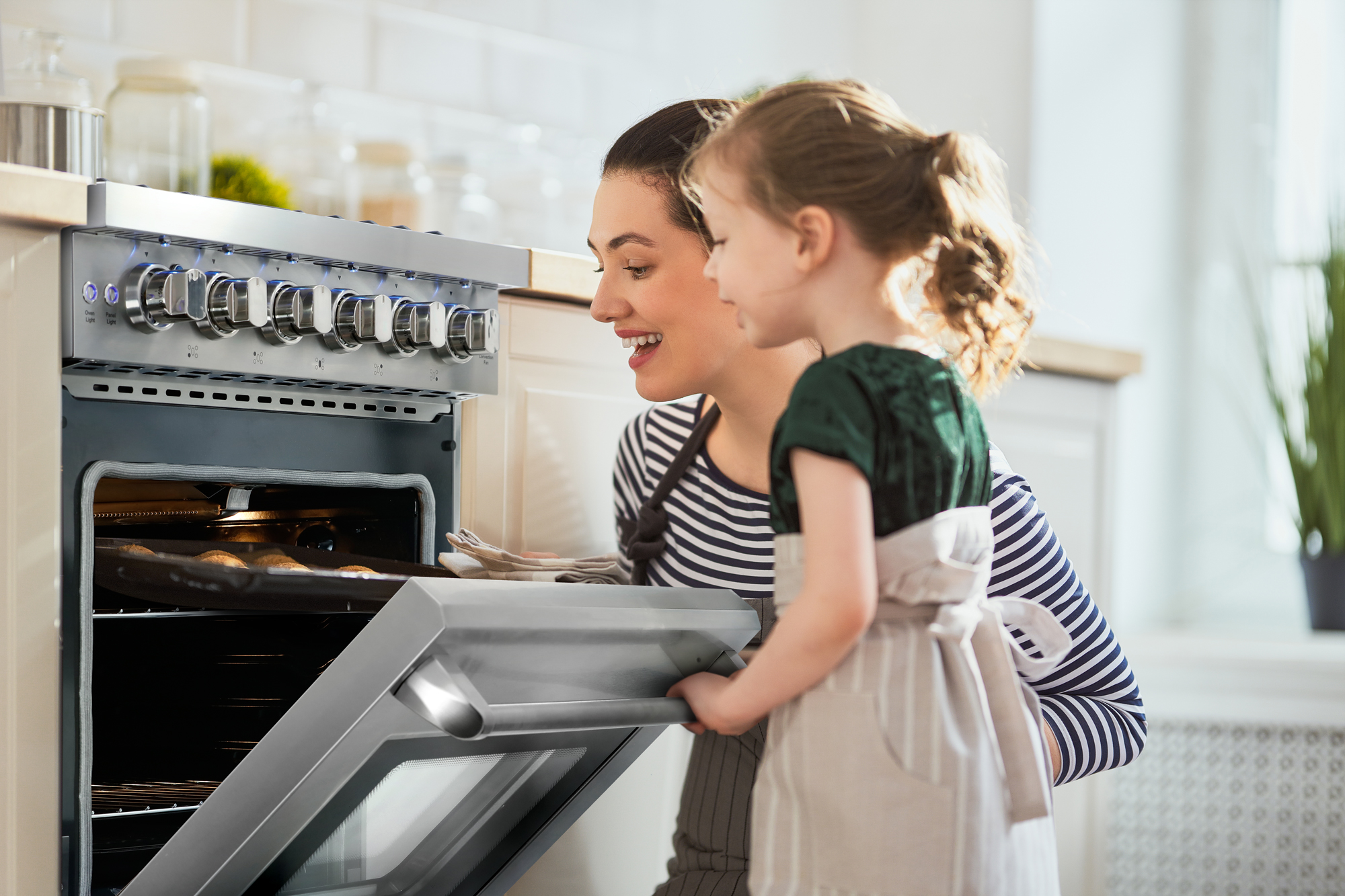The COS-QS48 Range Hood: 48-Inch Power with LCD Control and Quiet Operation
Large cooktops and ranges demand ventilation systems sized to match their output, and the COS-QS48 delivers the coverage and performance that 48-inch cooking surfaces require. Part of Cosmo’s Q Series, this under-cabinet range hood combines a 48-inch width with sophisticated LCD panel controls, four fan speeds, and ARC-FLOW permanent stainless steel filters. With noise levels as low as 40 dB and energy-efficient LED lighting, the COS-QS48 proves that powerful ventilation doesn’t require loud operation or complicated maintenance. The 48-inch width specifically serves kitchens with larger cooking surfaces that smaller range hoods can’t adequately cover. Whether you have a 48-inch range, dual fuel range with griddle, or a wide cooktop configuration, matching your ventilation width to your cooking surface ensures effective capture of cooking byproducts before they spread throughout your kitchen. Why 48-Inch Width Matters for Proper Ventilation Range hood sizing directly affects ventilation effectiveness, and the 48-inch COS-QS48 provides the coverage that large cooking surfaces need for optimal performance. Adequate coverage across the entire cooking surface ensures that steam, smoke, and grease get captured regardless of which burners you’re using. When range hoods are significantly narrower than cooktops, cooking byproducts from outer burners escape capture and spread into your kitchen. The industry standard recommends range hoods be at least as wide as the cooking surface they serve, with some experts suggesting 3-6 inches of additional width for improved capture efficiency. The 48-inch COS-QS48 provides proper coverage for 48-inch ranges and cooktops without excessive overhang. Professional-style ranges with six or more burners often come in 48-inch widths, making the COS-QS48 an appropriate match for these higher-output cooking appliances. The ventilation capacity needs to match the heat and cooking byproducts these powerful ranges generate. Dual fuel ranges with griddles or French tops frequently measure 48 inches wide and produce substantial heat and moisture that smaller range hoods struggle to handle effectively. The COS-QS48’s width ensures adequate capture area for these cooking configurations. Kitchen design aesthetics improve when range hood width matches appliance width, creating visual balance and intentional proportions that make kitchens look thoughtfully designed rather than mismatched. The proper sizing prevents the frustration of inadequate ventilation – lingering cooking odors, grease deposits on cabinets, and steam condensation on walls – that undersized range hoods create despite homeowners operating them at maximum speed. LCD Panel and Soft Touch Controls The COS-QS48 features an LCD control panel with soft touch operation, providing modern control interface that’s both functional and easy to clean compared to traditional button systems. LCD display shows current fan speed, lighting status, and potentially additional information in a clear, easy-to-read format. The illuminated display remains visible even in low light conditions, allowing operation without having to feel around for controls. Soft touch controls respond to light finger pressure rather than requiring mechanical button presses. This touchpad-style interface provides smooth operation while eliminating the mechanical switches that can accumulate grease and become sticky over time. Easy cleaning of the control panel becomes possible with the flat, sealed surface that soft touch controls create. You can wipe the panel clean without worrying about getting moisture or cleaning products into button gaps and switches. Modern aesthetic of LCD panels and soft touch controls complements contemporary kitchen designs while looking more refined than traditional mechanical switches and knobs. The interface suggests advanced technology without unnecessary complexity. Responsive operation provides immediate feedback when you adjust settings, with the LCD display confirming your selections clearly. The controls respond reliably to touch commands without requiring repeated attempts or excessive pressure. The digital interface allows for more precise control settings and potentially additional features compared to simple mechanical switches, while remaining intuitive enough for anyone to operate without consulting instructions. Four Fan Speeds for Precise Ventilation Control The COS-QS48 offers four distinct fan speeds rather than the three speeds common on many range hoods, providing finer control over ventilation intensity and noise levels. Low speed setting handles gentle cooking activities like simmering, warming, or cooking with minimal steam and smoke. This quietest setting provides adequate ventilation for light cooking while operating almost silently at the hood’s lowest noise level. Medium-low speed (the second setting) bridges the gap between low and medium, offering slightly more power than the lowest setting without jumping to full medium speed. This intermediate option provides flexibility for moderate cooking that needs more than minimal ventilation but doesn’t require high power. Medium speed handles most everyday cooking tasks effectively – sautéing, pan-frying, boiling pasta, or preparing typical family dinners. This setting balances adequate ventilation with reasonable noise levels for comfortable cooking and conversation. High speed delivers maximum ventilation power for high-heat cooking, searing, stir-frying, or situations where you’re using multiple burners simultaneously at high output. This setting ensures effective capture during intense cooking while accepting higher noise levels when maximum performance is needed. The four-speed configuration provides more flexibility than three-speed systems, letting you fine-tune ventilation intensity to match actual cooking needs rather than compromising between settings that are either too little or too much. Gradual power progression through four speeds creates smoother transitions between ventilation levels, allowing you to increase or decrease power incrementally rather than making large jumps that might be excessive or insufficient. 40 dB Minimum Noise Level: Remarkably Quiet Operation The COS-QS48’s noise level as low as 40 dB represents impressively quiet operation that allows comfortable conversation and kitchen use even while the range hood operates. 40 dB comparison provides context – this noise level is comparable to a quiet library, soft whisper, or refrigerator hum. At this level, the range hood operates noticeably but doesn’t dominate the sound environment or require raising your voice. Comfortable conversation becomes possible even with the range hood running, unlike loud ventilation systems that make talking difficult and create unpleasant kitchen environments. This quiet operation encourages actually using your range hood rather than avoiding it due to noise. The lowest fan speed typically produces the 40 dB noise level, with higher speeds generating increased noise as ventilation power increases. Even at higher speeds, well-designed


